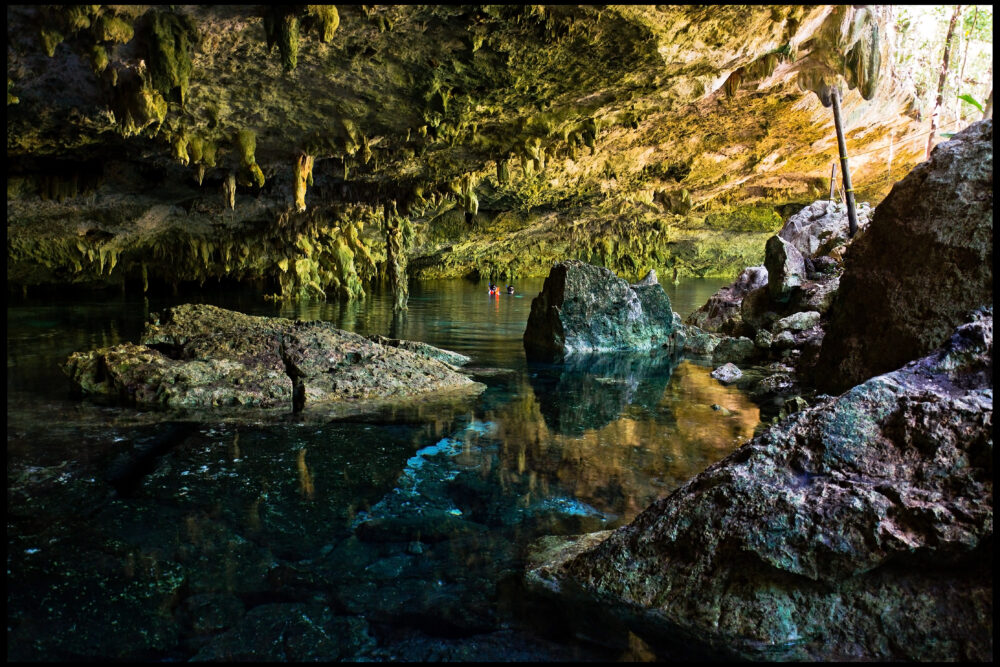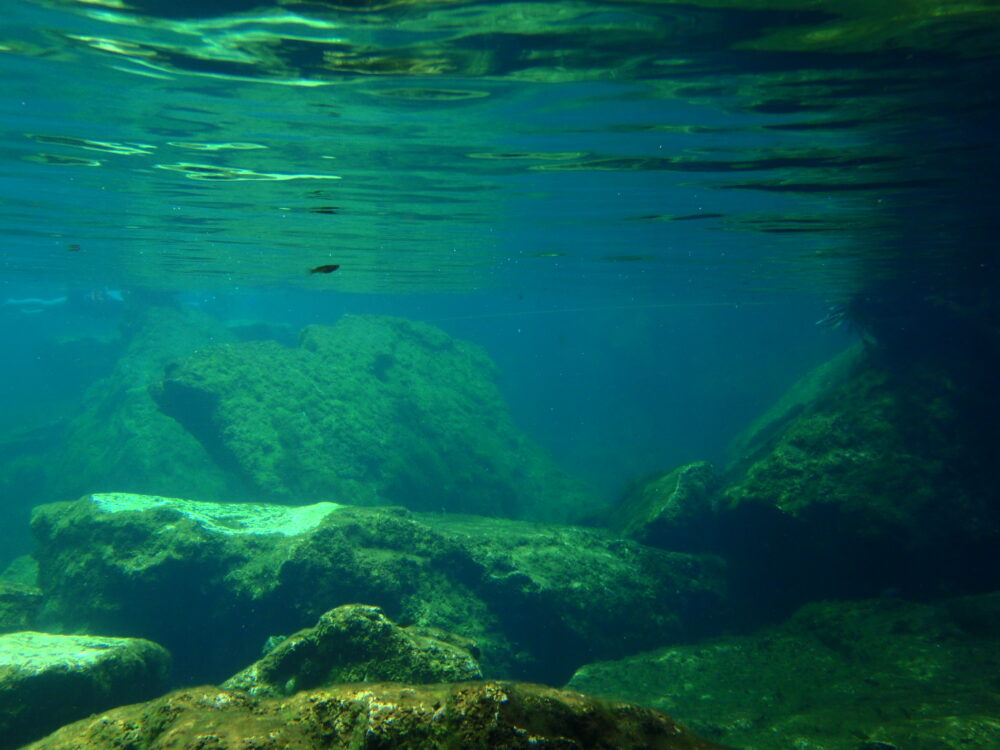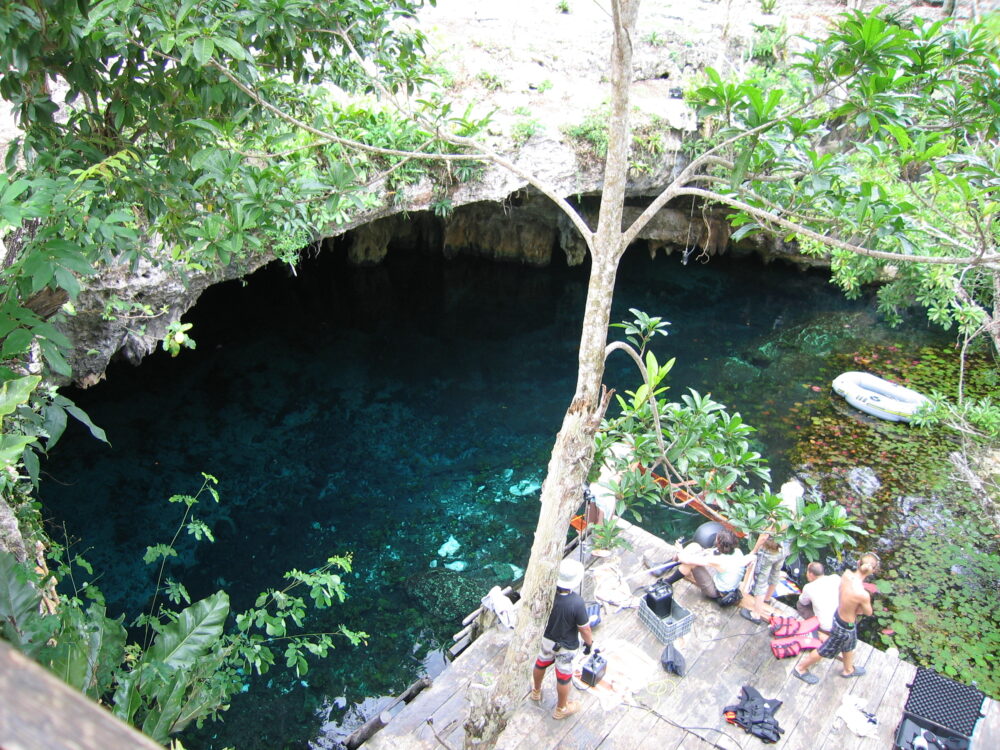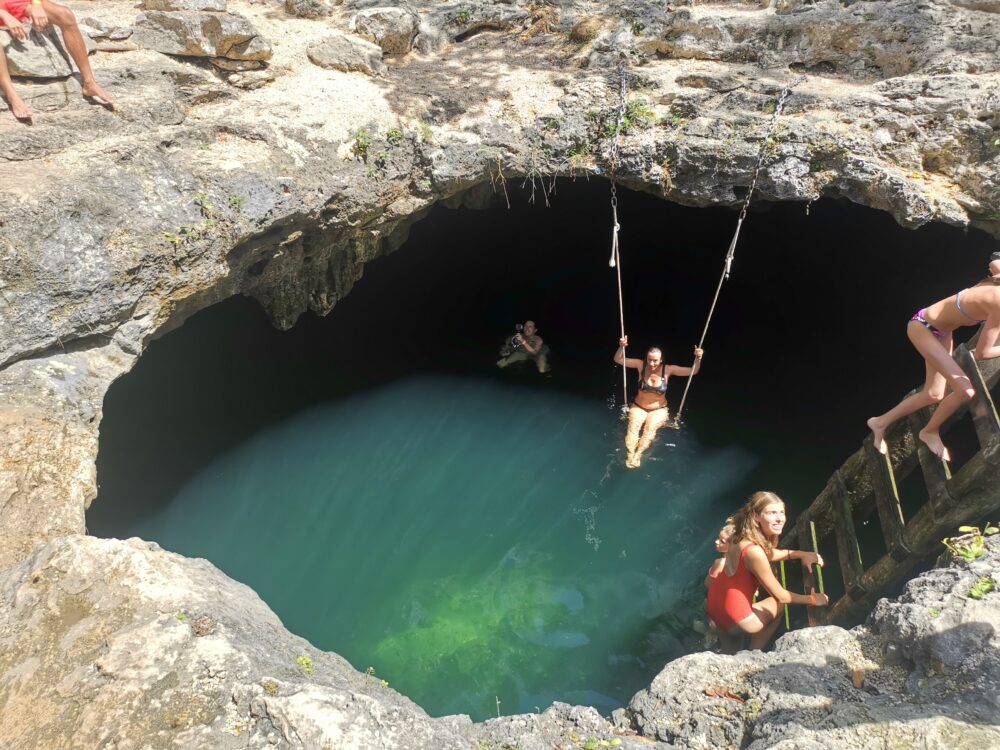The Riviera Maya is home to some of Mexico’s most dazzling offerings. Among them, one of the region’s most unique sights are its mesmerizing cenotes.

Dos Ojos Cenote (Photo: Guillén Pérez via Flickr / CC BY 2.0)
Cenotes are large sinkholes that form when limestone at surface level collapses, revealing large caverns, formed over millennia, that are filled with natural water. Of the many thousands dotted throughout the Yucatán region of southeast Mexico, many are perfect for swimming, providing a one of the country’s most thrilling experiences.
Although these natural spaces are the perfect destination for anyone bored of their hotel swimming pool and looking for a little adventure off the beaten path, cenotes also hold a special place in local lore. In Maya culture, cenotes were one of the pathways to the underworld, known as Xibalba. Many cenotes therefore were ceremonial sites where offerings were thrown as a way of communicating with the gods of these dark recesses.
These days, backpackers have co-opted these sites for recreational purposes, with guided dives down into the labyrinth of underwater caves common for experienced divers, and snorkeling or swimming at the surface for a less claustrophobic experience. Fish and wildlife call these cenotes home, too, such as the garra rufa fish, which are commonly used at fish foot spas. So, not only are cenotes wonderful places to immerse yourself in the natural wonders of the Yucatán, but if you feel a tickle on your feet, don’t worry, it’s just a little garra rufa tending to your toes.

Jardin del Eden Cenote (Photo: Lara Danielle via Flickr / CC BY 2.0)
Top cenotes
Jardin del Eden, or Garden of Eden in English, is simply what its title suggests. Upon entering, you feel you are transported into a different time. Only nature surrounds you, lush jungle greenery, iguanas sunbathing on the large rocks circling the crystal clear pool. It is one of the area’s largest open air cenotes and is ideal for swimming, snorkeling or simply basking in the sun. This cenote is located 25 km from Playa del Carmen and 3 km from Puerto Morelos. It is easily accessible by taxi, car or bus.
Dos Ojos Cenote is located between Playa Del Carmen and Tulum, so is easily accessible for most travelers staying in either area. Dos Ojos, or the two eyes cenote, includes more than just one cenote. Here you will find two large sinkholes, resembling two eyes, which gave this cenote its name. These pools are actually connected by a 60-meter underwater cave that is accessible for divers. So if it’s diving, snorkeling or swimming that you’re looking for, Dos Ojos is a great option as it has a little something for everyone.

Gran Cenote (Photo: Mikko Koponen via Flickr / CC BY 2.0)
Gran Cenote is located just outside of Tulum and is well worth the visit. It is a quite popular cenote, given its turquoise clear waters, caves ideal for snorkeling and its accessible location. It is best advised to get there in the early hours to avoid the occasional large crowds. It is a great cenote for a swim or for those in search of more you can also snorkel into the Gran Cenote’s caves and revel in its natural beauty, with stalactites hanging from its ceiling and stalagmites rising from the cave floors beneath the water. Don’t be afraid if you see some glowing eyes glaring at you from above; they belong to the many bats that call this cenote home.
Calavera Cenote, or skull cenote, gets its eerie name from the natural formation of the cenote that resembles an actual skull. Calavera cenote is located in the heart of Tulum pueblo and isn’t as well-known as some of its neighboring cenotes, so if you’re lucky you may even get the chance to have the cenote all to yourself if you arrive in the early hours. Calavera cenote is famous for diving as its underwater tunnels connect the cenotes that make up Calavera, but if diving isn’t your thing the clear waters make for excellent swimming. There are wooden ladders that you can easily get in or out of the water with, or for the braver few, skip the ladder and dive straight in from the rocks above. Whatever your heart desires, this cenote should be sure to fill it.

Calavera Cenote (Photo: Tim Kroeger via Flickr / CC BY 2.0)
Cenote Siete Bocas, or seven mouths cenote, gets its name from the seven different entrances you can use to enter this fascinating cenote. It is located in Puerto Morelos, the northernmost part of the Riviera Maya, and just south of Cancun. Like Calavera, you can choose to simply jump straight into one of the cenotes’ many alluring mouths or take the wooden stairs provided. All of the seven mouths are connected by an underwater cave system so be sure to take your snorkeling equipment as there is much to see here under the glistening transparent waters.
Practical Information
Every cenote will have a different entrance fee, ranging from 100 pesos per person to 600 pesos per person (depending whether you want a tour or rental equipment). It is best to check online ahead of time to see what price the cenote will ask and best to bring cash as most cenotes don’t accept credit cards.
As well as varying prices each cenote has specific opening and closing hours and it is advised to check ahead of time before visiting to ensure you will be able to enter at your desired time.
Cenotes are located in the middle of the Riviera Mayan jungles, which means these places are home to an array of wildlife, including iguanas, bats, fish, turtles and even pesky mosquitoes. Some travelers choose to bring mosquito spray to avoid these blood sucking pests, but it is advised to wash off any bug spray or sun tan lotion before entering the cenotes to keep these waters clean for those critters who call them home.
The Riviera Maya runs the stretch of the 307 highway, starting south of Cancun in Puerto Morelos and running all the way to Tulum. This highway is lined with cenotes, many of which are some of the region’s most stunning. As you head south and reach Tulum, on your right you will see Highway 109, heading in the direction of Cobá. This route is also home to many cenotes, some of which are much more secluded than the ones just off the main highway.